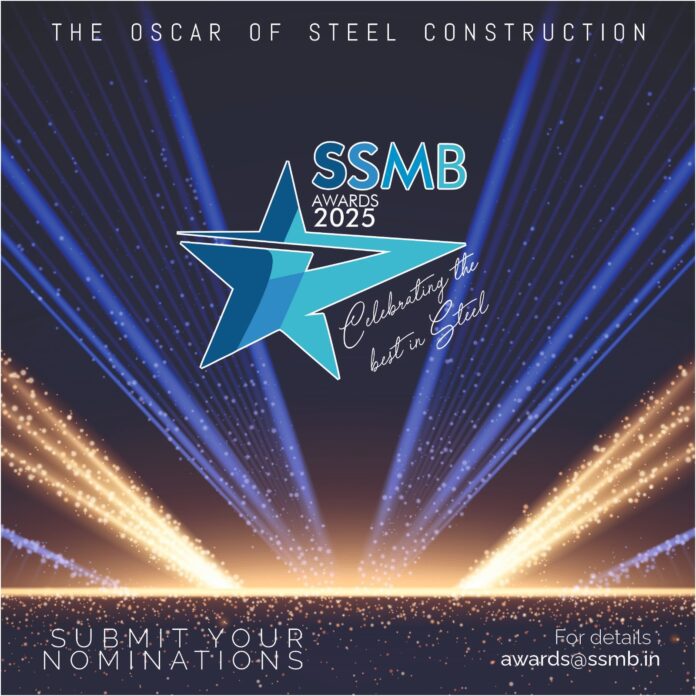Intro – Embarking on a journey through the intricate world of architecture, Swapnil Patil, Partner at Swapnil Patil and Partners unravels the secrets behind the steel marvels that shape our modern skyline. He shares profound insights into the dynamic fusion of innovation and tradition, exploring the transformative role of steel in architectural designs. From iconic inspirations to the practical challenges faced in construction, Patil envisions steel not just as a material but as the backbone of contemporary urban aesthetics.
What attracts you to using steel as a primary building material in your architectural projects?
If you look back at the turn of the 19th Century, with the advent of the Industrial Revolution, there was the invention of the steam engine, cast iron and fibreglass. Steam engines changed the game for transportation and industries. Cast iron revolutionised the way we build. Before this, pig iron was the more popular material though it was brittle and made it difficult to construct large spans. A fascinating invention which catapulted the use of steel was in elevators. A huge change was seen in the way steel was integrated into buildings in metropolitan areas like New York and Manhattan. Architects like Joseph Paxton and Otto Wagner started to explore the use of steel innovatively. To me, that is the most fascinating thing about steel; the flexibility it allows to create expansive buildings.
Can you share any specific examples of how you have used steel in your designs or projects?
It is difficult to use steel exclusively due to the cost constraints. However, as a practice, we are primarily involved in urban design and master planning and also do healthcare and institutional buildings. For us, public buildings are spaces that need to be built in all its glory. These buildings often involve spaces like atriums, courtyards, and lobbies which receive a lot of footfall. They need to not only be good-looking but also be well-lit and provide an ‘a-ha’ moment. By default, if it’s a double or triple-height atrium, we would have a nicely designed steel staircase which would be the central element. Glass roofs with a steel structure let in natural light. Our focus while using steel is to highlight the material and make it the hero.
Are there any architects or architectural projects that have inspired your interest in steel design? Please share your thoughts.
During my second year of Architecture, I attended one of the lectures by Ar. Pramod Beri in which he has used steel in very interesting ways for his atriums and skylights. That created a spark and inspiration about the use of steel in buildings and it led me to research this topic further. Buckminister Fuller of course has done wonders with steel. One of my earliest heroes is Joseph Paxton.
If you look at what he did with the Crystal Palace, it is absolutely stunning. It is one of the first examples of how well-designed and elegant buildings can be achieved through the use of steel. Otto Wagner also has done some amazing work. In late 19th Century Vienna, public buildings like post offices and banks designed by Wagner had glass roofs. Of course, you have to talk about Daniel Burnham’s work in Chicago and Louis Sullivan. In current times, the way Norman Foster, Richard Rogers, Renzo Piano, or Santiago Calatrava use steel and celebrate it is something that I have always been inspired by.
In what ways does designing with steel impact construction timelines and costs compared to other materials?
The truth is, in India, we are used to doing wet construction with cast in-situ cement and steel reinforcement which is labour-intensive and takes a lot of time. If I were to do the same project in the US, labour would always be an important factor. Fortunately or unfortunately, labour is quite cheap in India so there is no impetus for the client to add that extra 15-20 per cent cost. Having said that, the way we are progressing and the speed at which we are building, we will run out of labour soon. In the near future, the industry will have to move away from labour-intensive work and steel would be at the forefront in terms of time. The margins are thinning out, so if a developer wants quick returns, they would have to build quic kly.
How do you stay updated on the latest developments and trends in steel-based architecture and design?
Keep your eyes and ears open. One of the best ways to stay updated is to read. Travel and keep an eye out for inspiration.
What challenges have you encountered when working with steel in your architectural projects, and how did you address them?
It comes back to skilled workmanship. Especially with steel, it’s the same old story. The fabricators are trained on the job and oftentimes miss out on fine details. The biggest challenge is to get the industry and how to train and up-skill the labour force.
What is your opinion on the future of steel in architecture, considering emerging technologies and sustainability trends?
If you have to build fast and efficiently, steel is the answer. Ours is a small country geographically compared to the US or Russia, so our plots and parcels are also compact. So, if you want to do buildings with relatively larger spans or column-free or with bigger floor plates, we would have to work with steel. Technology is always evolving; it aids in finding the right structural solutions.
Steel is one of the most sustainable materials. Concrete has a latent energy cost in terms of the concreting process, transportation costs, and heat. Steel is relatively cheaper, not in terms of direct comparisons, but it offers more invisible benefits.
Are there any specific projects or areas within the steel construction industry that you hope to explore in the future?
I have a burning desire to do a building completely in steel. I am in conversations with some structural engineers to do a 6-7-storey building. We are also on the lookout for the right client who can take that leap of faith.




